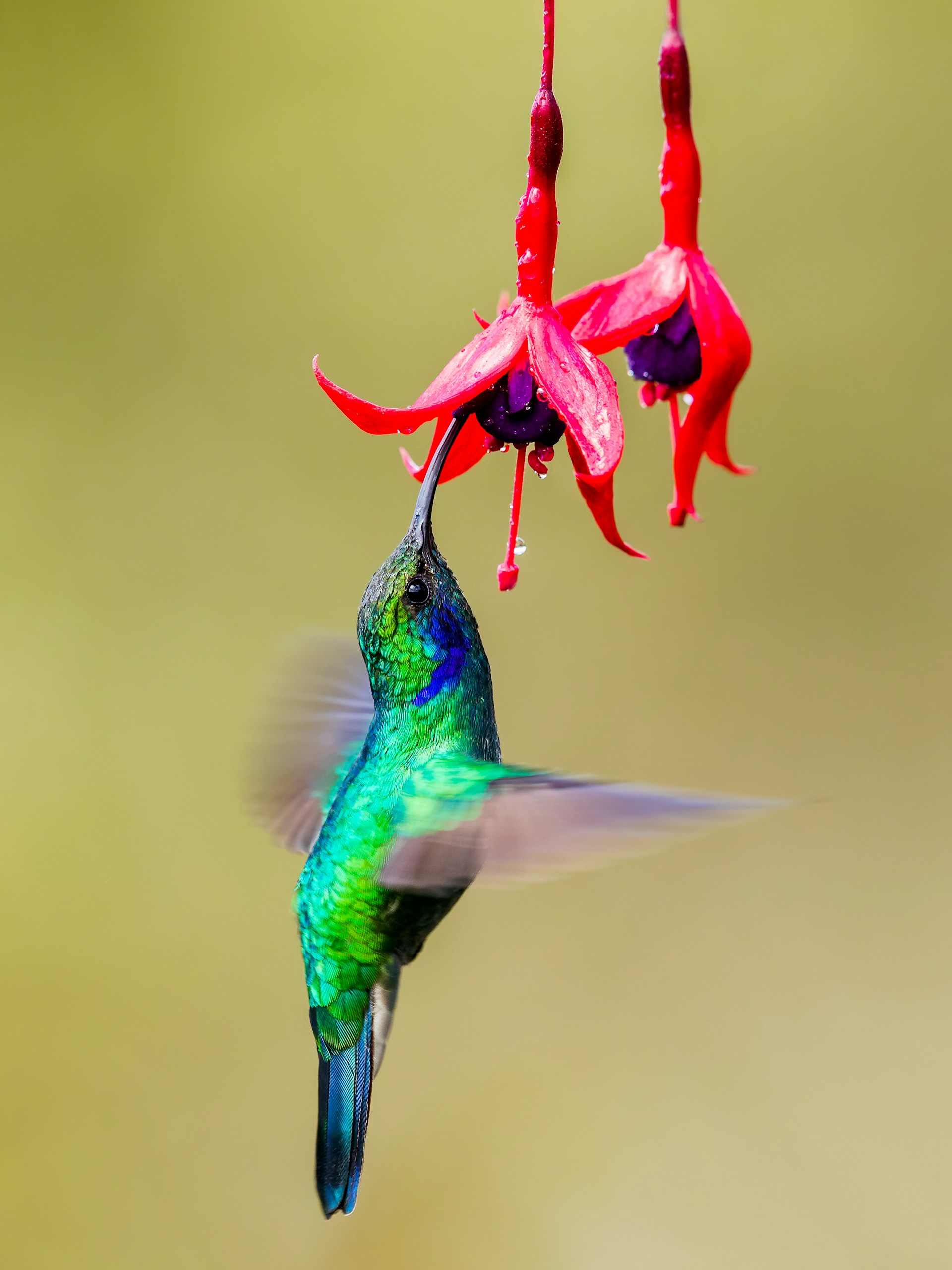Creating a Year-Round Oasis for Anna’s Hummingbirds: Feeding, Habitat Preferences, and Personal Encounters
Anna’s hummingbirds (Calypte anna) are a vibrant and enchanting sight for many outdoor enthusiasts. These small, iridescent birds are well-known for their lively chirping and aerial acrobatics, enchanting birdwatchers throughout Oregon and beyond. Their chirping patterns of Anna’s hummingbirds and colorful plumage make them a truly special species. This article explores how you can create a year-round haven for these mesmerizing creatures by understanding their habitat preferences, feeding habits, and behavior.
Understanding Habitat Preferences
Year-Round Presence
Anna’s Hummingbirds are unique among North American hummingbirds as they do not migrate, making them year-round residents in parts of Oregon. The availability of consistent food sources is crucial for their survival throughout the year. While some other hummingbird species migrate to follow blooming patterns, Anna’s Hummingbirds have adapted to colder climates and urban environments due to new food sources such as winter-blooming eucalyptus trees and hummingbird feeders.
Optimal Habitat Setup
Creating an optimal habitat involves more than just setting out a feeder. Incorporating certain plants into your garden can make a significant difference. Planting lantana for hummingbird attraction, along with other native blooms, can provide ample nectar sources and naturally attract these birds. The best native plants for Anna’s hummingbirds include:
- Ribes sanguineum (flowering currant)
- Penstemon species
- Salvia microphylla
- Agastache species
- Epilobium canum (California fuchsia)
- Fuchsia speciosa
Feeding Habits and Preferences
Diverse Diet
While nectar is a staple of their diet, insects preferred by Anna’s hummingbirds provide essential protein. Their diet includes small insects, spiders, and occasionally sap, making them adept at pest control in your garden. To cater to both these needs:
- Provide homemade nectar (1 part sugar to 4 parts water).
- Plant insect-attracting plants to offer natural hunting grounds.
Tips for Maintaining Feeders
Proper maintenance of hummingbird feeders for health is paramount. Regular cleaning and changing of nectar prevent mold, which can be fatal to hummingbirds. Important tips include:
- Cleaning feeders weekly in cooler weather and more frequently in hot weather.
- Using dish soap, white vinegar, or bleach for thorough cleaning.
- Ensuring all soap residues are rinsed off to prevent harm to the birds.
- Boiling and cooling the sugar water before adding it to the feeder.
- Avoiding artificial sweeteners and dyes in the nectar.
- Placing feeders near flowering plants to mimic natural feeding habitats.
Personal Encounters and Behavior Insights
Close Encounters
One of the most thrilling aspects of hummingbird watching is observing their interactions up close. Personal anecdotes reveal that remaining still near feeders or flowering patches can invite hummingbirds closer. These birds are curious and, with patience, may approach feeders while you’re nearby. Observing their feeding routines and territorial disputes offers a deeper appreciation of their lively world.
Observing Interactions
Anna’s hummingbirds are territorial and exhibit fascinating behavioral traits. It’s not uncommon to witness a hummingbird battle over territory, with one defending its feeding ground with vigor. After such skirmishes, some birds may return to “talk” with those nearby, communicating their triumph or discontent. This communicative interaction, paired with their unique diving behavior during courtship, adds layers to their already complex social behaviors.
Identifying Individuals: Male, Female, and Juveniles
Recognizing Males and Females
Identifying Anna’s hummingbirds can be rewarding, yet challenging. Male hummingbirds typically boast a bright red throat (gorget), which they flaunt during social interactions and courtship displays. Females, on the other hand, might have a few red feathers but primarily exhibit subtler tones. Distinguishing juvenile birds requires keen observation, as young males and females often share similar feather patterns until maturity.
Creating a Hummingbird-Friendly Garden
To create a garden that attracts hummingbirds year-round, consider plants that bloom throughout different seasons. This ensures a continuous supply of nectar. Recommendations include:
- Planting early bloomers like Ribes sanguineum for spring.
- Using summer-bloomers like Salvia species to extend nectar availability.
- Incorporating late bloomers like Fuchsia speciosa into your garden plan.
Regularly maintaining your garden and making seasonal adjustments will keep it attractive to hummingbirds. Ensure your garden offers spaces for resting, hiding, and nesting by incorporating native plants and avoiding the use of pesticides that could harm the birds.
Conclusion: Embracing the Joy of Hummingbird Watching Year-Round
Creating a favorable environment for Anna’s Hummingbirds is not only gratifying but also contributes to the conservation of these charming creatures. By integrating native plants, maintaining clean feeders, and understanding their behaviors, you can enjoy the presence of hummingbirds throughout the year. Share your experiences and tips with fellow enthusiasts to foster a community dedicated to the well-being of these remarkable birds.

